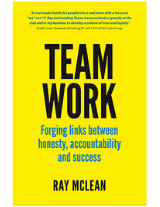The business world is filled with buzzwords: Innovation, authenticity, engagement. These words are so overused that we sometimes forget why they became buzzwords in the first place. But the reason they are discussed so frequently is because they are really important focuses for all forms of business and leadership.
The well-being of your team members is closely linked to organisational success.
Well-being is one of those words. It seems like every organisation has recently jumped on the employee well-being bandwagon. But there’s good reason for it: The well-being of your team members is closely linked to organisational success. When you have a happy and healthy team, your company performs better.
Don’t believe us? Let’s take a look at the numbers.
What can well-being do for your bottom line?
Did you know that employees with poor employee well-being cost Australian organisations almost $11 billion annually? Or that a single employee with dismal well-being loses, on average, 50 working days a year due to decreased productivity?
These are just a few of the numbers uncovered by PwC research on the affect of well-being on Australian professionals and organisations – and that’s not the only research linking well-being and business success. Here are just a few areas of organisational importance impacted by the health of your employees:
- Retention: Employees in workplaces that focus on well-being are much more loyal, according to a study by global market research company TNS. The respondents that worked at companies with strong commitments to employee well-being were much less likely to seek new job opportunities and nearly 50 per cent of respondents claim they have left jobs due a negative well-being culture in the office.
- Productivity: Research cited by the Australian Government found that workers with the highest levels of well-being were three times more productive than those with the lowest levels of well-being. On average, healthy employees work 143 effective hours every month, whereas unhealthy employees work only 49 productive hours.
- Profitability: When you have higher levels of employee retention and increase productivity, your company’s profitability excels as a result. You can minimise the costs of onboarding new employees while keeping up the levels of output in your company – a true win-win.
.@beyondblue launches new website today supported by PwC reporting on creating a mentally healthy workplace: https://t.co/bzJp0khksl
— PwC Australia (@PwC_AU) June 16, 2014
How can Australian leaders improve employee well-being?
The correlation between well-being and organisational success is clear. So, what can leaders do to ensure they are making active strides towards improved employee well-being?
1. Having genuine conversations about well-being
A lot of businesses are adamant about having strict boundaries between the professional and the personal realm. But it’s foolish to think that issues in an employee’s personal life won’t affect their working life. We need to understand the relationship between these two worlds and how it affects well-being.
It’s foolish to think that issues in an employee’s personal life won’t affect their working life. We need to understand the relation between these two worlds and well-being.
As leaders, this means letting your team members know it is okay to bring these issues up and discuss how it is impacting their work-life. When you have honest conversations about well-being and what affects it, you can find better solutions to improve.
2. Creating stronger relationships
You need your employees to know that you care about them and their well-being. The path to improved well-being begins with strong work relationships. In fact, it is one of the 12 main questions Gallup uses to gauge employee engagement: Does your supervisor, or someone at work, seem to care about you as a person? Employees are more likely to be 100 per cent committed to an organisation when they know the organisation cares about them. Commit to building relationships with all of your team members so they know they are valued.
3. Committing to well-being check-ins
All of this will mean nothing if you don’t actually commit to checking in with your team members about how they are doing. These don’t need to be formal reviews, they can just be casual check-ins. Pay attention to team performance and behaviours. If you notice someone is acting out of character or falling short on their targets – have a chat with them. Ask them if it is related to workplace stress or personal problems and work together to find solutions. When employees know someone is in their corner, they feel more capable of tackling the issues at hand.
At the end of the day, employee well-being comes down to strong professional relationships and the honest conversations that can happen because of them. To learn more about how to commit to employee well-being and better internal relationships, contact us today.



